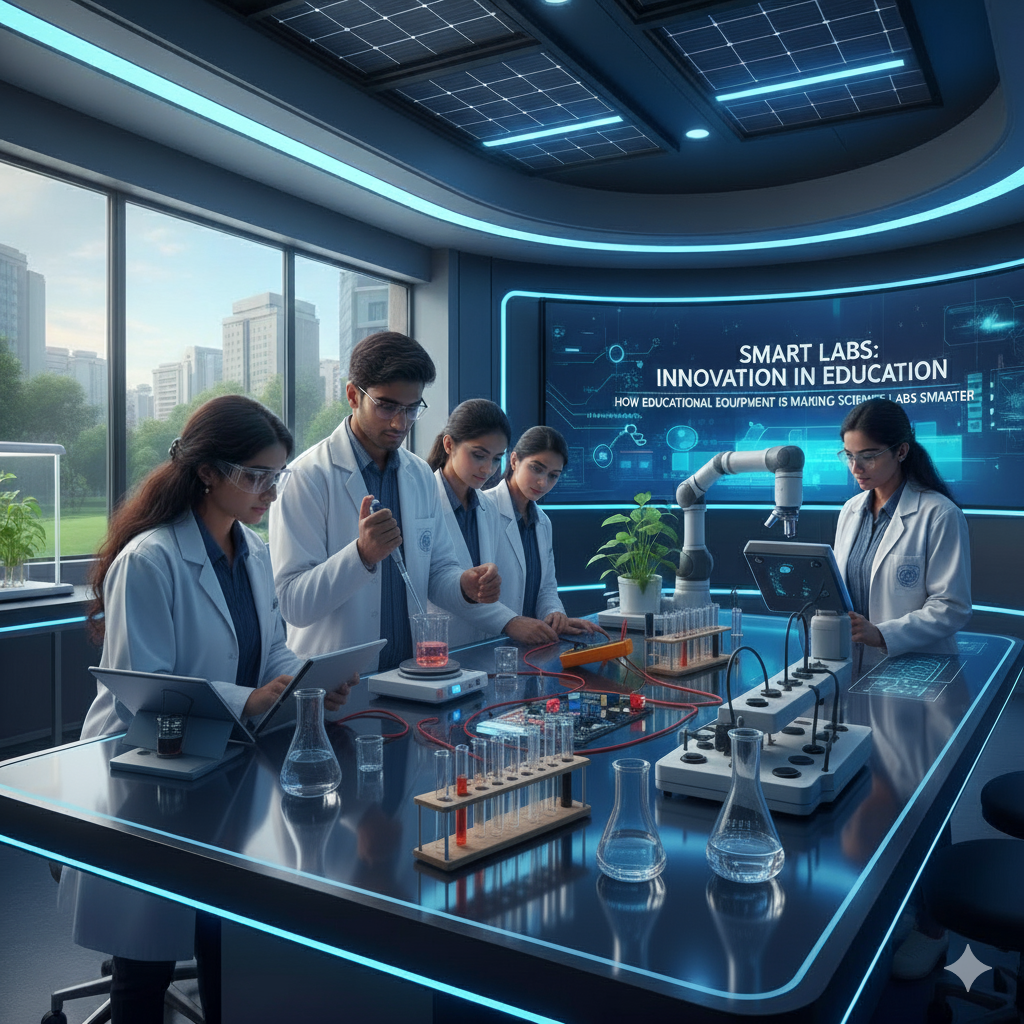3D Interactive Displays: Bring Subjects to Life

Imagine a classroom where students no longer just see a diagram on a screen, they explore it. Rotate a human heart, dive into the layers of Earth, or understand geometry by manipulating shapes in space. This isn’t distant-future tech. With 3D-enabled interactive displays, it’s already happening in Indian classrooms.
Why 3D Interactive Display Is Becoming Essential in the Classroom

Today’s learners are visual, fast-paced, and digitally fluent. Yet, much of classroom instruction still relies on flat visuals such as slides, PDFs, and textbook scans. These often fail to convey the depth or scale of complex concepts.
Multiple recent studies suggest that 3D visuals can increase understanding and boost retention especially in subjects like science, math, and geography. While exact outcomes may vary by context, there’s growing consensus that spatial learning helps students better connect theory with reality.
That’s where a 3D-enabled interactive display offers a significant edge. When integrated into classrooms, these screens allow students to interact with immersive models, bringing abstract ideas to life. And this happens without the need for headsets or expensive VR labs.
Subject-Wise Impact: Where 3D Makes a Difference
Not every subject benefits equally from 3D. But for several core areas, the difference is immediate and tangible:
1. Science & Biology
Instead of passively watching animations, students can zoom into a 3D model of the brain or circulatory system. They can isolate organs, rotate them, and understand function through interaction via a large interactive display screen. This may enhance comprehension, particularly in high school biology or college-level anatomy labs.
2. Mathematics & Geometry
Geometry comes alive when students manipulate 3D prisms or cones. Understanding volume, symmetry, and spatial relationships becomes more intuitive. An interactive flat panel display with 3D capability helps turn rote learning into tactile discovery.
3. Geography & Social Sciences
From navigating mountain ranges to exploring ancient monuments in 3D, immersive maps offer richer understanding of topography, history, and culture. Educators can guide students through these environments on-screen, enabling context-rich exploration.
4. Engineering, Architecture & Design
In higher education, static blueprints and 2D schematics often fall short in conveying the depth of a structure or mechanism. With 3D-enabled interactive display screens, students can explore architectural models, mechanical systems, or product designs from every angle — rotating, deconstructing, and rebuilding in real time. This improves spatial reasoning and supports project-based learning and digital prototyping. For design institutes and engineering colleges, it can be a practical, scalable alternative to costly simulation labs.
Beyond Engagement: A More Inclusive, Collaborative Classroom
While 3D visuals tend to captivate attention, their deeper value lies in improving accessibility and collaboration:
- For diverse learners: Visual-spatial formats often help students with reading challenges or limited prior exposure to academic concepts.
- In multilingual classrooms: 3D can reduce reliance on language-heavy explanations, especially in rural or Tier 2–3 settings.
- As a collaborative tool: Many modern interactive display panels support multi-touch interactions. This allows multiple students to engage with a model simultaneously fostering group problem-solving and peer learning.
Importantly, this shift doesn’t require a complete tech overhaul. With plug-and-play 3D-enabled interactive displays, schools can upgrade pedagogy without overburdening teachers or IT infrastructure.
What to Look For in a 3D-Ready Interactive Display
If your institution is considering this upgrade, here are a few pointers to guide your decision:
- Content compatibility: Does the display support curriculum-aligned 3D models across key subjects?
- Ease of interaction: Look for smooth touch recognition, gesture control, or pen-based input for more precise engagement.
- Classroom fit: While VR may feel futuristic, displays that project 3D content on a large screen remain far more practical and scalable for typical Indian classrooms.
- Software integration: Can it connect with existing learning management systems or digital content platforms?
- Training & support: Even the best hardware underperforms without proper onboarding for educators.
You don’t necessarily need the flashiest features. What matters more is whether the display is intuitive, adaptable, and relevant to your students’ day-to-day learning.
Here is a 15-point interactive display checklist to make sure your classroom is ready for a successful upgrade.
A Simple Shift, A Deeper Learning Experience
Interactive displays have already become a staple in many Indian schools. But adding 3D capabilities elevates them from being just a smart board to becoming a gateway for immersive education.
Not every institution may adopt 3D displays right away, and that’s understandable. But with NEP 2020 encouraging hands-on and tech-based learning, early adopters could start seeing better learning outcomes and stronger engagement from both students and parents.
The real goal is to involve. To move from showing diagrams to letting students discover dimensions.
Curious to explore what 3D can bring to your classrooms? Start with the right interactive display solution and let the learning unfold. Book a demo with Roombr.
Foziya Abuwala
Share
Step Into the future of
Education with Roombr

















